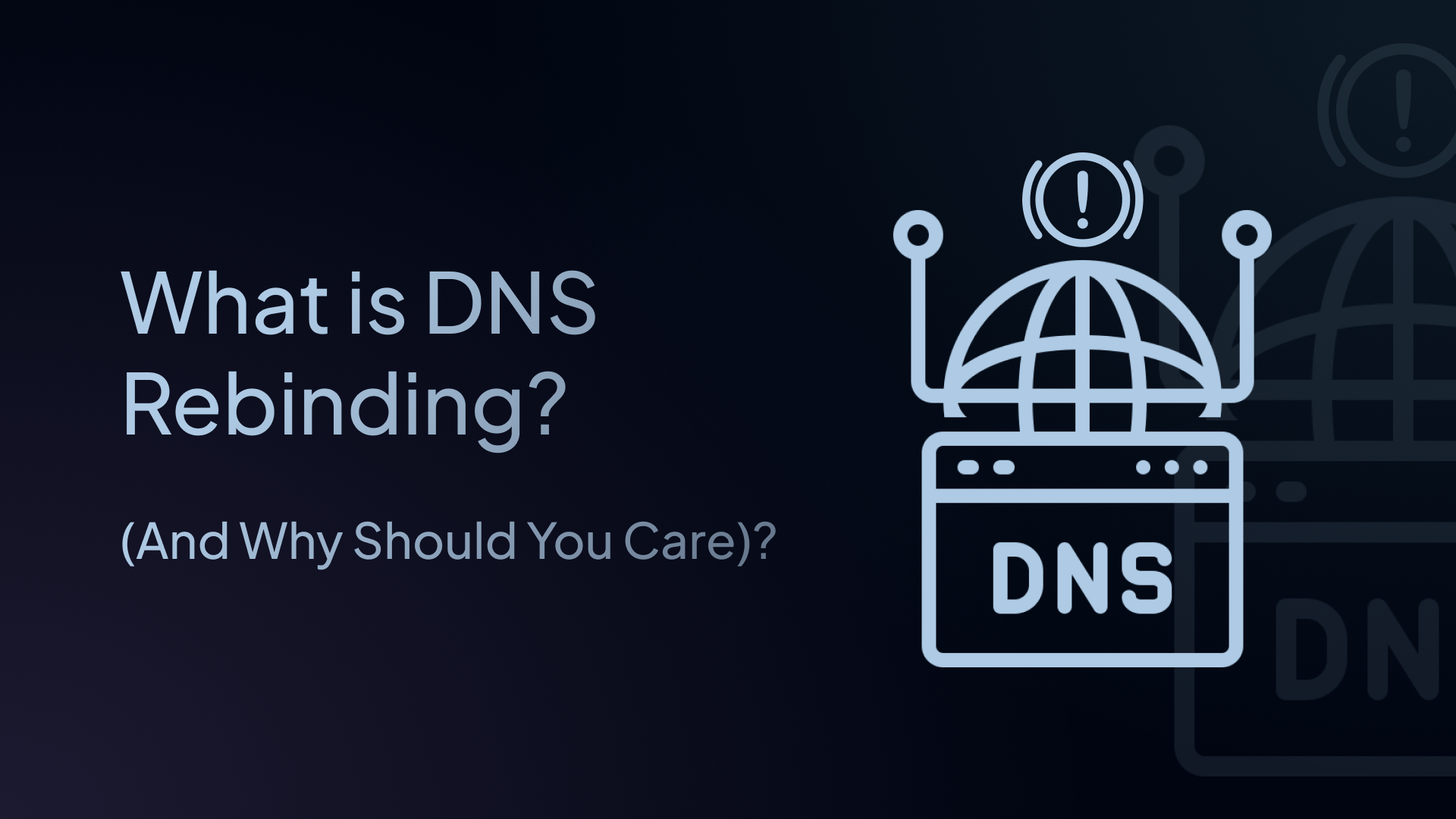What Is DNS Rebinding (And Why Should You Care)?

Imagine this: you click on what seems like a normal website, but behind the scenes, it quietly opens a door into your private home or office network. That’s the basic idea behind DNS rebinding, a sneaky attack that turns your web browser into a tool for hackers.
It sounds technical - and it is - but the danger is real, and the good news is that it’s also preventable. Let’s break it down.
What is DNS Rebinding?
Think of your web browser like a very obedient assistant. It happily loads websites, runs scripts, and follows rules - one of which is the same-origin policy. This rule says a website can only access data from the same place it came from.
But DNS rebinding tricks your browser into breaking that rule.
Here’s how it works in simple terms:
- A hacker creates a website that looks harmless.
- You visit that site. No alarms go off.
- Behind the scenes, the site changes its DNS record (that’s like a phonebook entry for websites) to point to something inside your local network - like your Wi-Fi router or a smart camera.
- Your browser doesn’t realize anything shady is going on. It sees the same website name, so it thinks it’s still safe.
- A script on the page starts talking to your internal devices as if it belongs there.
This can happen entirely through your browser, even if you don’t click on anything else.
What Can DNS Rebinding Be Used For?
Once that door into your network is open, here’s what could happen:
- Your router settings could be changed to send all your traffic through a malicious server.
- Smart devices like baby monitors or security cameras could be accessed remotely.
- Files on internal servers could be read or deleted.
- Internal apps like dashboards or admin tools might be hijacked.
- Malware or crypto miners could be silently installed.
Worst of all, most of this traffic looks normal - because it’s coming from your own browser. Firewalls won’t block it. Antivirus tools might not catch it. You usually don’t realize it happened until something breaks or your internet bill skyrockets.
How to Protect Against DNS Rebinding
The best protection is stopping the attack before it starts. That means blocking shady DNS lookups.
Here’s how:
1. Use a DNS service that blocks rebind attacks
Services like Control D actively block DNS responses that try to map internet domain names to private IP addresses (like 192.168.1.1 or 10.0.0.1). This means if a website tries to rebind to your internal network, the DNS request simply fails - no connection, no risk.
2. Enable DNS Rebind Protection on your router
Many modern routers have a built-in setting to block rebind attempts. If yours has it, turn it on. This adds another layer of defense.
3. Lock down your devices
Even with protection in place, make sure your local devices (especially routers, NAS boxes, and IoT gear) are password-protected. Disable any services you don’t use. If something does slip through, a password can be your last line of defense.
What Happens If You Get Hit by a DNS Rebind Attack?
If a DNS rebinding attack succeeds, recovery can be messy. You may need to:
- Reset your router to factory settings
- Change all your device passwords
- Check for rogue firmware or configuration changes
- Patch any vulnerable software or apps
- Restore backups and monitor for follow-up attacks
Prevention is far easier than cleanup.
Test Your Network for DNS Rebinding Vulnerabilities
Not sure if your network is protected? We’ve built a free tool that checks whether you’re vulnerable to DNS rebinding attacks.
It’s fast, simple, and doesn’t require installing anything: Run the DNS Rebind Test
If you pass, great - you’re already ahead of the curve. If not, don’t panic. We’ll walk you through how to fix it.
Final Thoughts
DNS rebinding is one of those attacks that sounds like science fiction until it happens. But you don’t need to be a security expert to defend against it.
With a protective DNS service like Control D and a few smart settings at home, you can shut the door on DNS rebinding - and keep your private network truly private.

